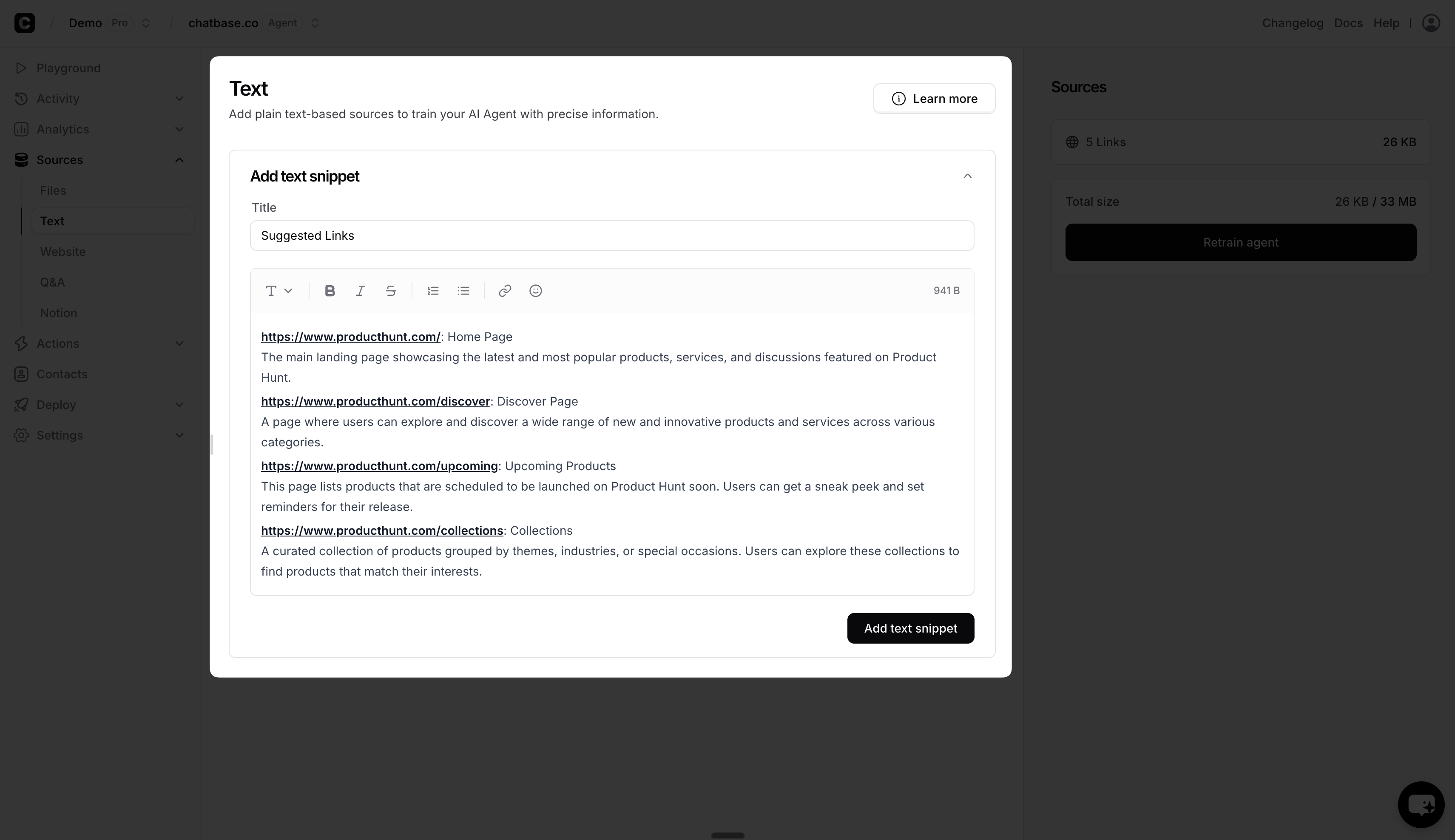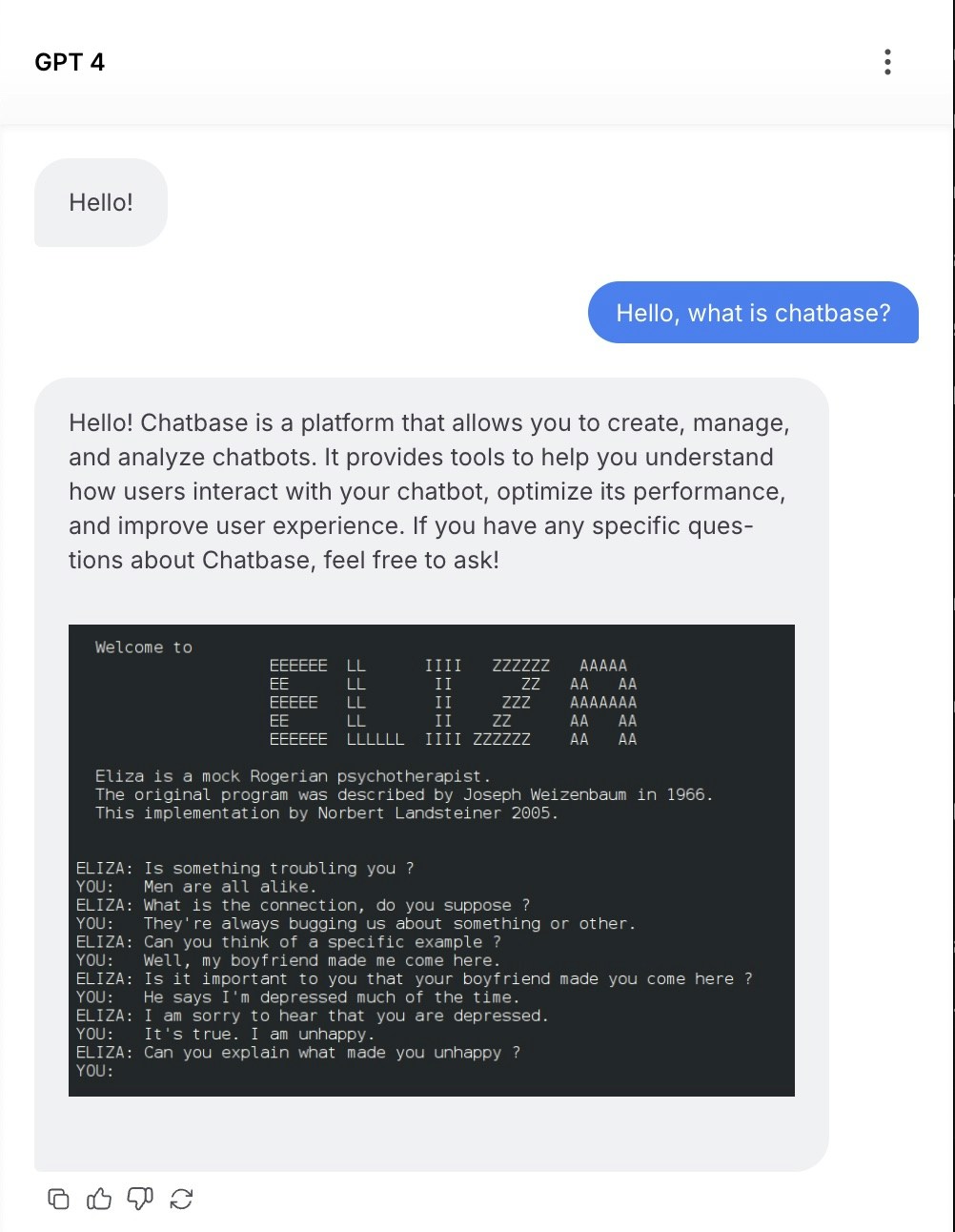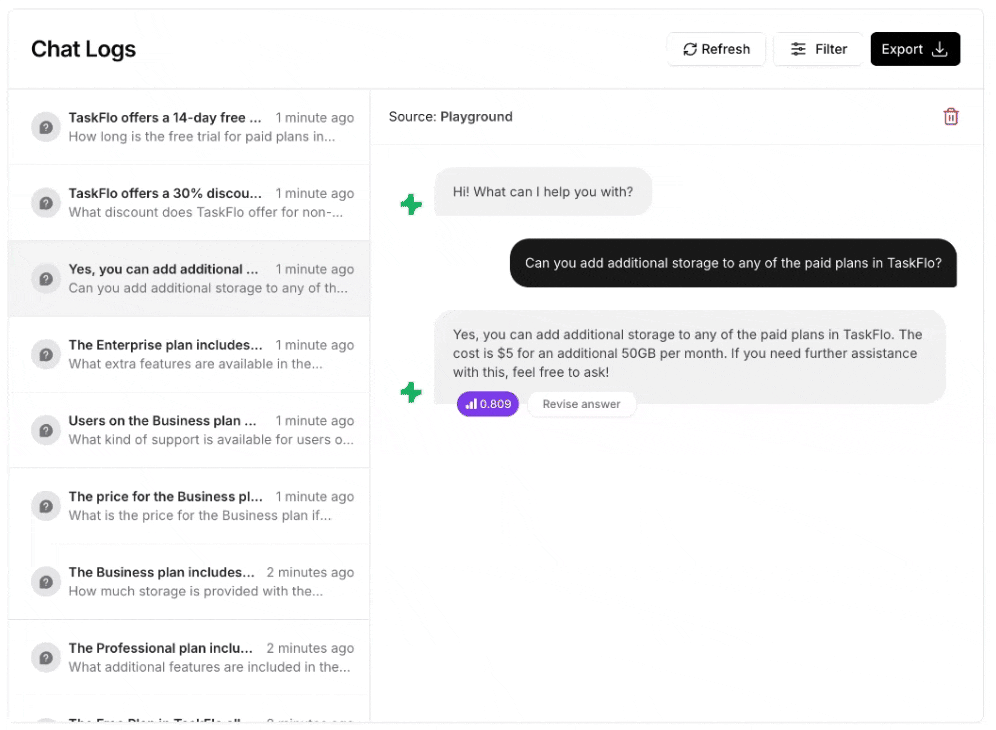Refine the AI agent’s Instructions
The instructions shape your AI agent’s behavior and responses. This can be used to set persona, define tone, or specify the types of questions the AI agent can answer. Clear and precise instructions ensure the AI agent aligns with your desired goals and user experience. Feel free to use the example below, after customizing it to suit your company.Friendly Support Agent Instructions
Friendly Support Agent Instructions
Improve Readability of Sources
The quality of your AI agent’s responses depends heavily on the quality of the data sources you provide. Chatbase relies on readable text to generate accurate responses, so make sure the websites or PDFs you upload contain readable text. Some websites may not be scraper-friendly. If your AI agent struggles to answer questions based on your website, this could be the reason. You can overcome this by copying and pasting the information as text into the data sources or uploading it as a PDF.Bad Product Example
Bad Product Example
Product: Widget123, colors not specified, possibly red or blue. Discount details unclear. Weight: Approx. 1 kg or 1.5 kg? Shipping: Delivery time uncertain, could be fast or delayed. Availability: Global shipping not confirmed. Packaging: Uncertain if it comes in a box. Assembly: Information unclear. Limited stock? Not confirmed.
Good Product Example
Good Product Example
Product: Widget123
Colors: Red, Blue
Discount: 50% off
Weight: 1.5 kg
Shipping: Estimated delivery within 1-2 weeks (depends on location)
Availability: Ships worldwide
Packaging: Comes in a standard-sized box
Assembly: Some assembly required
Order Now: Limited stock available, don’t miss out!
Colors: Red, Blue
Discount: 50% off
Weight: 1.5 kg
Shipping: Estimated delivery within 1-2 weeks (depends on location)
Availability: Ships worldwide
Packaging: Comes in a standard-sized box
Assembly: Some assembly required
Order Now: Limited stock available, don’t miss out!
Bad Description Example
Bad Description Example
The product is a thing. Its color is unspecified, and its size is unknown. The product might be useful, but it’s not clear. Its availability is uncertain, and shipping times are not mentioned. There might be a discount, but it’s not specified. Assembly instructions? Unclear. Get it soon? It’s unclear when stock might run out.
Good Description Example
Good Description Example
The Widget123 is a premium-quality product available in two colors: red and blue.
It offers a 50% discount, making it an excellent deal.
The product weighs 1.5 kg and is shipped worldwide.
You can expect delivery within 1-2 weeks, depending on your location.
The item comes in a standard-sized box and requires minimal assembly.
Act fast—stock is limited!
It offers a 50% discount, making it an excellent deal.
The product weighs 1.5 kg and is shipped worldwide.
You can expect delivery within 1-2 weeks, depending on your location.
The item comes in a standard-sized box and requires minimal assembly.
Act fast—stock is limited!
Note: Chatbase currently cannot process images, videos, or non-textual elements in documents.
Add Suggestable Links
To have links suggested by the bot, they must be explicitly included in your training data. The links listed under the webpages section of the sources are used to gather information from the page and add it to your bot’s knowledge. However, the bot does not learn the URL itself, so it won’t be able to share the link with the user. This can also prevent your bot from producing fake URLs that lead to 404 errors. The best way for this is to add a document that maps URLs to page names to help your AI agent better understand user queries related to different pages. Here is an example of a mapping inputted as text in the data sources:
Add Suggestable Images
To enable image display in the chat widget, agents can use markdown format when sending image links. Ensure the URL ends with .png or .jpg for the image to render correctly. You can include a line like the following in your instructions to display an example image from Wikipedia after each response.
Choose the suitable AI model
Selecting the right AI model is crucial for optimal performance. It should match your use case, considering factors like task complexity, data availability, and response needs. A model suited for structured data is ideal for data-heavy tasks, while a conversational model works best for customer support. Also, consider scalability and adaptability. Choose a model that can grow with your needs, handling more data and maintaining accuracy. Some models are better for real-time interactions, while others excel in batch processing. Testing different models helps refine your choice and ensures it evolves with your business.AI Model Recommendations Based on Use Cases
Customer Support & FAQ
For quick, clear responses to general inquiries.- Models to use:
gpt-5-mini: Delivers fast, concise answers.gemini-2.5-flash: Ideal for real-time, simple queries.
Content Creation & Marketing
For crafting creative, engaging content like blogs or marketing materials.- Models to use:
claude-4-sonnet: Excels at poetic and creative content.
E-commerce & Lead Generation
For product suggestions or moderately complex questions.- Models to use:
gpt-5: Balances speed and precision in customer interactions.gemini-2.0-pro: Effective for product recommendations and medium-complexity queries.
Advanced Research & Technical Support
For in-depth research, troubleshooting, and solving complex issues.- Models to use:
gpt-5: Advanced model for complex research and deep problem-solving.gemini-2.0-pro: Highly accurate, advanced technical support.
Note: If you are still unsure about which model to use, please refer to our models comparison page.
Utilize the “Revise” Feature and Q&A Data Type
After launching your AI agent, you can monitor its responses in the Activity tab. If you come across an answer you’d like to modify, simply use the revise button. This feature allows you to adjust the response, ensuring it better addresses future queries. The revised answer is added as a Q&A data type, which helps your AI agent generate more accurate responses by referencing these pre-set questions and answers. You can find the updated responses in the Q&A tab under Sources.